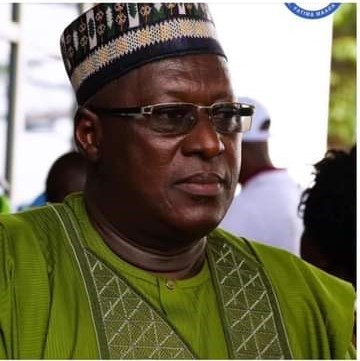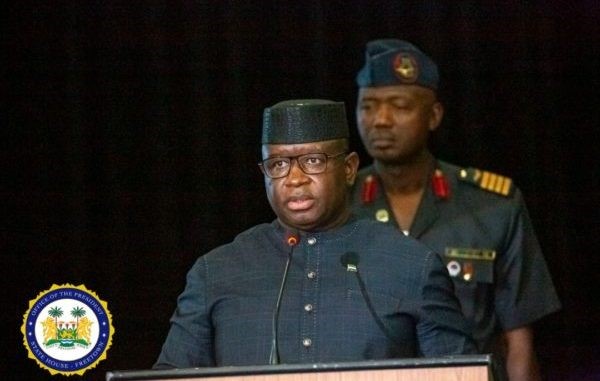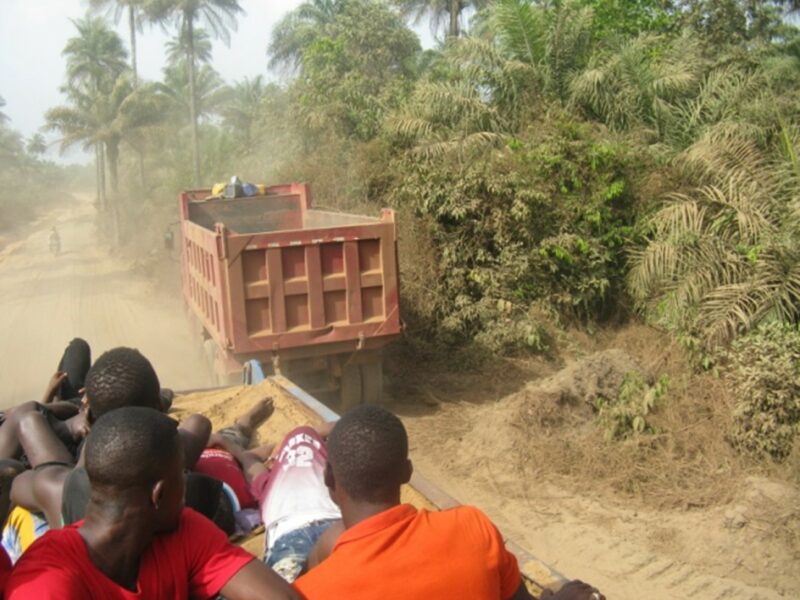Social infrastructure; meeting people’s basic needs in Sierra Leone
The presenters at Star Radio are, in my view, doing well. Their breakfast program of 21st August was very informative. That Chairlady of Dan Street Market, east of Freetown was more than a Shakespearean, when I heard her on radio preaching message of peace and non-violence ahead of the elections. He message was great and timely. Hassan Arouni from the BBC was also on Star Radio talking about their {BBC} Media Action programme. He spoke of citizens’ concerns about violence ahead of the elections, the concerns by Sierra Leoneans about our mineral wealth, saying we have minerals but communities are complaining of not seeing the benefits of these resources. (Photo: John Baimba Sesay, IA, Beijing, China)
The issue of media and elections came up prominently during the said discussion and we all know this is serious and we should do our best as media people to effectively contribute to the democratic values of our country. The need for us to foster national development can’t be overemphasized. The media are a catalyst for a country’s development strides. With the present free media landscape in Sierra Leone, I hold the view; we are bound to move in line with our traditional roles, as media people.
You see, the issue of our minerals has always been one of national concern. Our past leaders, in my view, have not been sincere with our people. Take for instance, by 2001, diamond exports from Sierra Leone totaled about US$74.3 million. By 2003, according to IMF Country Report for Sierra Leone (No. 04/420 of December, 2004, the country’s imports totaled $303.7 million and in the same year, exports totaled a mere $92.4 million. But interestingly, because of the dubious desire by a selected few at the time to corruptly enrich their pockets, the country painfully, in 2003, spent more than three times more foreign exchange than we could earn at the time. And then, the government massively tunneled itself into debt in 2003 alone — by a shocking $211.3 million. By 2005, Sierra Leone reportedly legally exported a record $140 million in gems and it was believed, that almost the same amount left the country through illegal means. (http://business.highbeam.com/5670/article-1G1-155273994/whatever-became-sierra-leone) .This is even corroborated by Gberie, Lansana, who wrote in 2007, that “…in 2006, after rigorous application of the international control system, the Kimberley Process Certification Scheme (KPCS), Sierra Leone officially exported over $140m worth of diamonds, about the same as in the previous year, and doubling that for 2004. In 1999, at the height of the war, official export was slightly more than $1m.” {Gberie, Lansana, 2007}
But did we see much from these figures then? You have the answer to this question. Now, forget about that. It is also a well known fact that immediately following the end to our civil war, Sierra Leone became an unimaginable recipient of donor support. In 2007, Jalloh, Mohamed A. wrote that “”aid” to Sierra Leone from the EU represents $107.5 million a year — about half of the unacknowledged aid that Sierra Leone involuntarily gave to the mainly Western countries in 2003 when… Sierra Leone’s needlessly inflated high-priced imports compared to its exports resulted in the increase of debt to mainly Western entities by a staggering $211.3 million in a single year…” (Source: Concord Times, as distributed by AllAfrica Global Media (allAfrica.com) or (http://business.highbeam.com/3548/article-1G1-156730837/truth-foreign-aid-sierra-leone). Whatever became of those donors funding to Sierra Leone following the end to our civil war to 2007 is a question still needing answer.
But today, there has been a different scenario in terms of donor funds and national development. There has been a sense of purpose, when it comes to our President utilizing donor funds and also using revenues generated at the local level, through the National Revenue Authority. The judicious use of donor funds and state resources is now felt in terms of our infrastructural development, in the fight against corruption and in the provision of free health care for our women and children. Let us face it, given recent happenings in Sierra Leone if anyone tells you we have not got the resources to develop Sierra Leone, then that person must have a rethink. What we lacked especially five years ago was the needed political leadership to have shown, that we could have gone miles in our desire for socio-economic development.
It is even interesting that even when President Koroma is busy transforming Sierra Leone, the ‘na we begin am’ theory has still not been ignored five years down the line since we had our last elections.
In my last article, I touched on what President Koroma has done in the area of infrastructural development, especially in line with how his government has been making proper use of donor funds since he came to power in 2007. Today, in continuation of the said issue (infrastructure), I am attempting to look at what his government has done in meeting the needs of our people from the perspective of social infrastructure. When I talk about social infrastructure I am talking about “…community facilities…and services that help individuals, families, groups and communities meet their social needs, maximize their potential for development… and wellbeing” (see and read : http://www.westernbay.govt.nz/Documents/Publications/Sub-regional%20Social%20Infrastructure%20Planning%20Framework.pdf ). They may include, but not limited to; facilities and services such as education, training, health, welfare, social services, open space, recreation and sport, safety and emergency services, arts and cultural facilities. They also may include, “lifecycle-targeted facilities and services, such as those for children, young people and older people e.g. early childhood centres and retirement villages, targeted facilities and services for groups with special needs, such as families, people with disabilities…”
The decentralization process, which was introduced almost a decade ago, has now been making great impact, since the councils are now provided with the opportunity to directly work with their communities in determining their development needs. Because of the relevance that President Koroma attaches to the process of local governance and devolution of state functions we realized that there has been an encouraging increase in budgeted transfers to local councils “…from Le 19 billion in 2005 to Le 34 billion in 2009, an increase of 44 percent (figure 8.2). With the exception of 2007 (a national election year), actual transfers increased during the same period by 150 percent, reflecting the fact that the ratio of actual to budgeted transfers rose from about 70 percent in 2005 to about 98 percent in 2009. The provisional figures for 2010 indicate that the budgeted amount for 2010 was more than 50 percent higher than for 2009 and that the actual transfers were higher than the budgeted amounts. This is a remarkable achievement for a country with a history of centralization. Transfers as a share of central government’s nonsalary, noninterest expenditures also increased, from 4.9 percent in 2005 to 11.9 percent in 2009.”(Source: Decentralization in Postconflict Sierra Leone: The Genie Is Out of the Bottle by Vivek Srivastava and Marco Larizza). This decision by government to make the process of decentralization fully operational is now reflected in the delivery of social infrastructural needs in Sierra Leone.
President Koroma’s government has always been people oriented. So by 2007, one of his core determination was to address the area of infrastructure, and he ensured, his infrastructural projects are not only limited to roads. Much has been invested in social projects for our people especially by giving premium to the locally assessed needs. One way he has been successful in the area of social infrastructure is by empowering the local councils. The government now takes development to every district in Sierra Leone, irrespective of political strongholds. For instance, President Koroma’s government has ensured the construction of transport terminals and shopping Plazas in Kenema, Bo and Makeni. Construction work in Kenema is complete and far advanced in Bo. Makeni’s has commenced and is on-course.
Government has also ensured the erection of about 50 street lights in 3 wards in Bo City, rehabilitated the Bo City Hall on Coronation Field Road, constructed a funeral home at Samie layout, Koribondo Highway- Bo City, rehabilitated the Presidential Pavilion and roofed the open pavilions at Coronation Field, Bo, among others. In Bonthe there has been the construction two Mini Markets on York Island, ensured the reconstruction of former ADO’S quarters into a guest house on Heddle Road, and embanked and constructed the Victoria Road Bridge in Bonthe Town. The construction and furnishing of the Moyamba Town Mini Stadium has been done in Moyamba, in Pujehun 48 Lockable stores in Ward 307, Kpanga Kabonde chiefdom, was undertaken, in Kailahun, we have seen the construction of a Multipurpose Hall in Bundumbu and Jojoima, Kailahun District, completed the construction of the Kenema City Clock Tower on Hanga Road, constructed a market store with WATSAN facilities, Ngombu section, WARDS 30 and 31, among other social infrastructure. This has also been the case in Kono, Kambia and Makeni where we have seen the construction of market stores building with 6 compartment toilets and two water wells with hand pump and submersible machine and fence in Ward 91, Rogbaneh Road.
In the Western Area, government has ensured the construction of a Multi Purpose Community Centre at River No.2, York Ward, a market with a parking lot at Ogoo Farm, Peninsular, 16 market stalls at Krootown road, a stall & Store at Congo Town Market, rehabilitated the Murray Town Market, the Brass St. Lorry Park and constructed a Community Centre, constructing a shopping centre at Sewa Grounds, Freetown, among others. When a country effectively meets the social infrastructural needs of her people, it goes a long way in determining its sincerity in also meeting other expectations. President Koroma, no doubt has done well within the first five years of his rule and his reelection in November will be used to appreciate his efforts.
Stay with Sierra Express Media, for your trusted place in news!
© 2012, https:. All rights reserved.







Shiek Turay
/
This is not about Koroma’s infrastructural development but our money NASSIT is destroying. I have been part of that project as a technical staff. A lot of fake deals to chop money had been done for Bo, Kenema Makeni and Freetown Bintumani project by both Nassit staff and Govt. personnel.The truth will be revived one when They Almight Allah is ready.
23rd August 2012